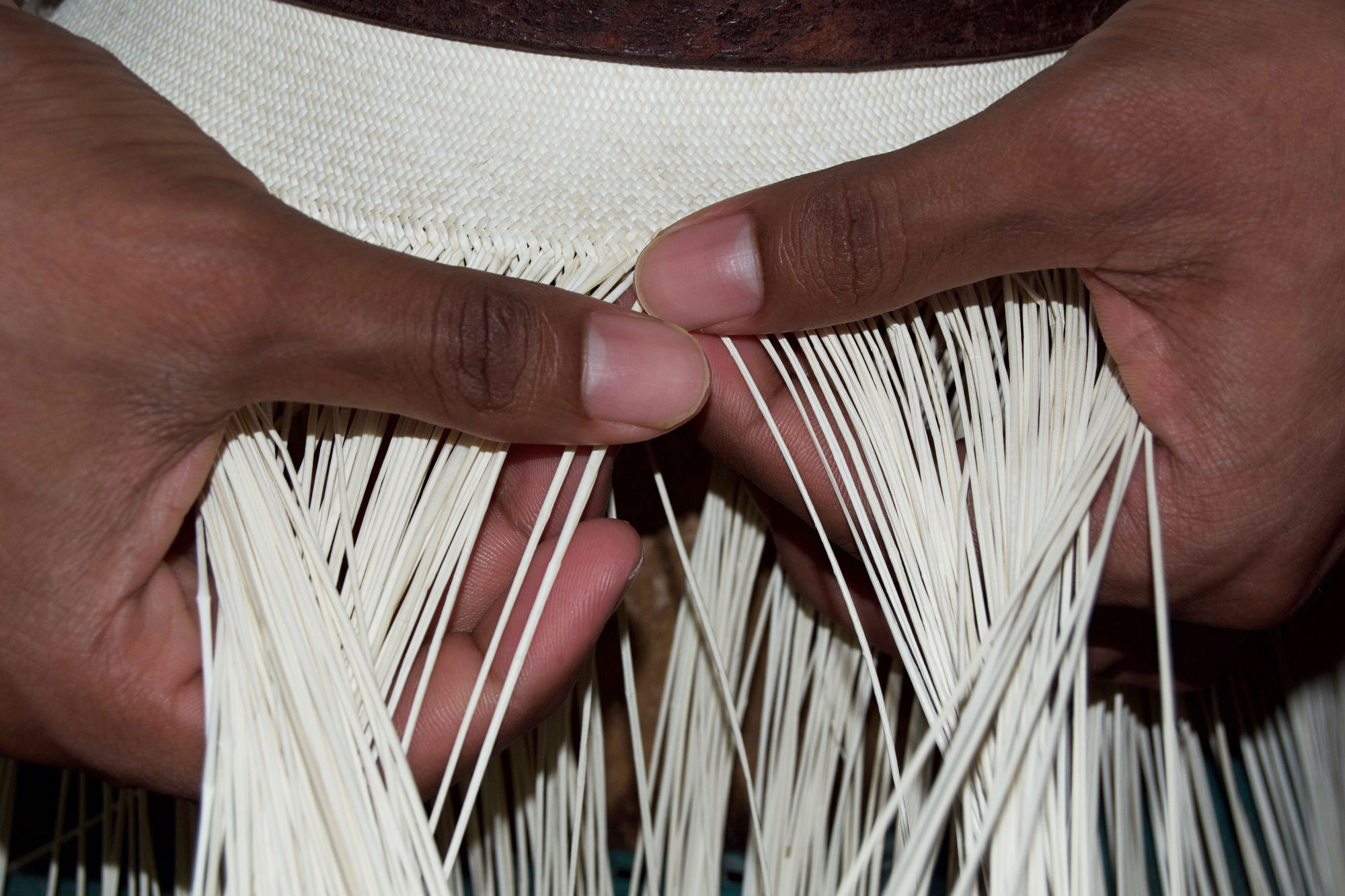THE MONTECRISTI HAT
The authentic “Panama” hat is manufactured exclusively in Ecuador, in line with ancient traditions. It is, in fact, made by expertly weaving the very thin fibers of the leaves of the Carludovica palmata, a wild plant known locally as toquilla or jipijapa, commonly found in the rainforests along the coastal territory.
To this very day, toquilla straw hats are entirely handmade by skilled and expert craftsmen, precious keepers of ancient techniques handed down through generations. Each hat is a true one-of-a-kind masterpiece and is given its shape through patient and methodical hand movements, in a complex and fascinating process.

Each stage of the process (known as compostura) is carried out with meticulous expertise: preparing the pieces of straw, the art of carefully interweaving them, giving them shape and the whitening process, which does not involve any chemicals, and finally giving the hat its form and working on the finishing touches.
In 2012 UNESCO recognized the art of weaving the Ecuadorian toquilla straw hat as one of humanity’s intangible cultural heritages, a real testament to the culture, value, traditions, knowledge and skills of Ecuadorian craftsmanship.
HISTORY
The origins of this popular accessory date over five hundred years: in the sixteenth century it was widely used by Ecuadorian aboriginal communities, who found it to be an effective protection from the sun and the tropical temperatures.
Its practical usefulness meant that in the following centuries it would become a highly exported item, initially focused on the commercial market of the Gulf of Panama (where it took on its misleading name) and later extending to every continent.
With its widespread popularity, the “Panama hat” achieved an iconic status, like the time it appeared in newspapers the world over when U.S. President Theodore Roosevelt wore it in a historic photo in 1914, at the inauguration of the Panama Canal.
